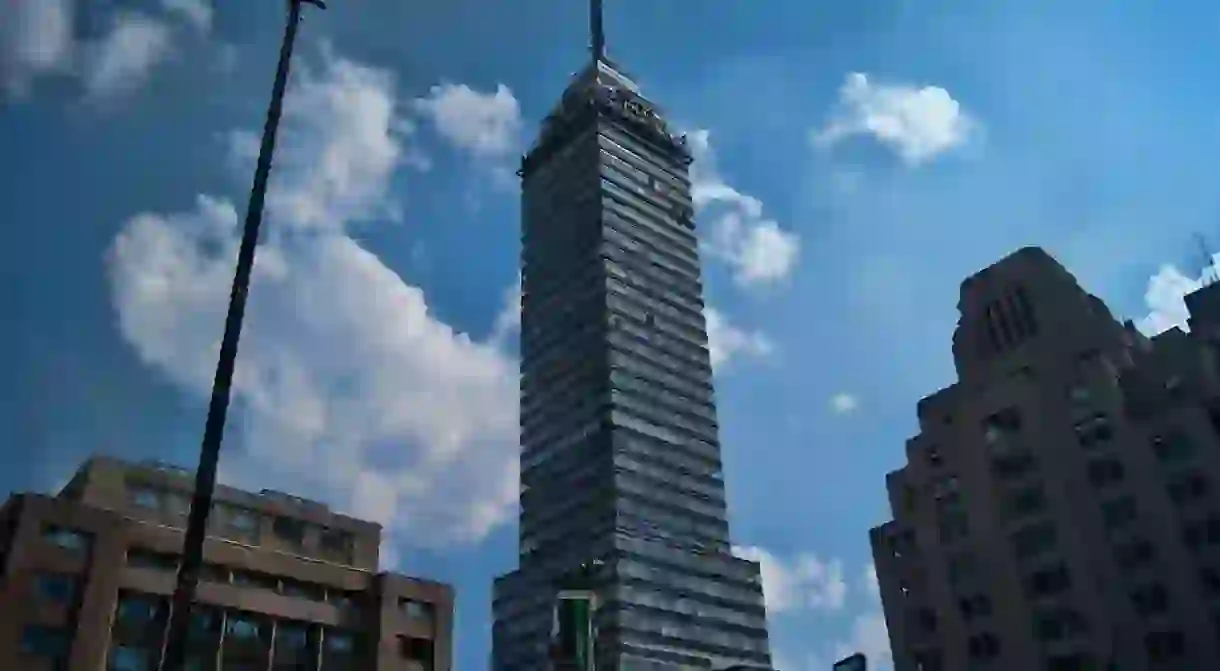10 Fascinating Things You Didn't Know About Mexico City

Mexico City is a tough place to know on an intimate level. It has a thousand and one secrets that it reveals only to the traveler that takes the time to get to know its streets well. Here are ten things that you might not know about the Latino megolopolis but that you should know for your next visit.
The Valley’s not a valley
The Valley of Mexico, where Mexico City is located, is not actually a valley at all, but a plateau that millenia of erupting volcanos and earthquakes created mountains around. That’s why there is no natural drainage in Mexico City and the reason why massive yearly flooding occured until the Aztecs built a system of dikes to control the flow of water into the “valley.”

Why it shimmies and shakes
Mexico City sits right on what is known as the Pacific Ring of Fire, a zone of fault lines that runs along the Pacific tectonic plate and some smaller plates in the Philippine Sea and Pacific Ocean. It also sits atop of tectonic plates that continue to shift and move underneath each other. That means that the city is located in the one of the most siesmically active areas on the globe.
The greener side
Despite its reputation for being super polluted, Mexico City is one of the greenest megacities in Latin America. Part of this distinction has to do with the fact that the Desierto de los Leones, a nearby natural reserve, is included within the city limits as well as the Parque de Chapultepec, which is almost double the size of Central Park.

The birthplace of a revolution
Freshly released from jail by the Cuban Batista government and exiled in Mexico, Fidel and Raul Castro met Ernesto “Che” Guevara in a tiny apartment in Mexico City’s Tabacalera neighborhood for the first time. It was in this apartment and in the Cafe de la Habana in Colonia Sa Rafeal that the three planned their return to Cuba and a revolution that would turn out to be one of the most infamous in world history.
The mother of all soccer stadiums
With space for 87,000 soccer fans, Mexico City has the largest soccer stadium in Latin America and the eighth largest in the world. The stadium is home to the Mexican National Team and Club America and was witness to Diego Mardona’s infamous “Hand of God” goal in the 1986 World Cup quarter finals.
An unintentional Venice
Because of the Spanish Colonists’ refusal to spare the money and labor to maintain the great drainage and dike system created by the Aztecs, in 1629 the city was flooded by torrential rains that left it 6 feet under water – for five years! Residents had to traverse the entire city in canoes and special wooden boardwalks were built in Spanish neighborhoods for them to get around. Unfortunately, Indian neighborhoods were washed away in the flood and many of the city’s indigenous inhabitants died from contagion and starvation.
Its architectural genius
Mexico City’s Torre Latinoamerica is considered an architecture masterpiece as it was the first skyscraper to be built in a highly seismic zone. It was constructed by Dr. Leonardo Zeevaert and his brother Adolfo Zeevaert to withstand Mexico City’s earthquakes by using steel framing and deep-seated piles. It’s said that during the 1985 earthquake, Mexico’s strongest in modern history, the only damage it suffered was a broken window and a busted water pipe.

A museum lover’s paradise
Mexico City has over 150 museums, more than New York City and Chicago combined. From the edible wallpaper of the Chocolate Museum to the understated elegance of the Museo Tamayo, every museum-goer can find their place to stare in awe in Mexico City.
Mexico City’s famous taco
There are many stories of its origin, but most taco afficionados would agree that Mexico’s famous taco al pastor was invented here. While the lebanese immigrants of Puebla may have invented the taco arabe – which was a riff on the shwarma of the middle east – the taco al pastor, which is similiarly roasted on a spit, was created in Mexico City, with several long time taco shops vying for creator status.

Its safety stats
While Mexico’s bad press is not always unwarranted, Mexico City is one of the safest cities in the country. As the country’s cultural and economic center there is special attention given to keeping it safe, and despite having your regular probability of big-city crime, Mexico’s capital remains one of the safest places for tourists to visit.













